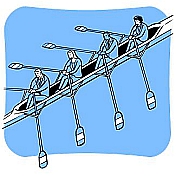Overview
The “Guidelines” section of the MyMG website explains the basics of management in a specific field. The section focuses on the best management practices and offers theoretical and methodological principles, concepts and ideas for managing activities relating to projects, workflows, business operations, and the like. It provides management tips, suggestions and pieces of advice to help people develop specific skills required to promote both individual and group ideas, create program management plans, and take every step with no waste of time and resources.
Why read it?
By reading the “Guideline” section you’ll learn the best management practices that uncover innovative and efficient techniques and solutions for solving complex challenges, managing groups, leading teams, and discovering opportunities for self-promotion, development and organization.
Who reads it?
All the management tips and suggestions listed in the “Guidelines” section will be helpful to project managers, team leaders, supervisors, owners of organizations, business trainers, department heads, directors, and many other people. The main idea of the Guidelines is to provide all these people with the comprehensive management tips and solutions that can be successfully applied to daily work practices. The key benefit of reading the Guidelines is that it helps you develop specific skills and obtain required knowledge so that you learn to follow established goals, produce expected results, and achieve the best management practices.
- Cost Management.
It provides an understanding of the processes for planning, managing and controlling costs and budgets. The guidelines will help you in allocating your project budget, monitoring expenditure, controlling people involved in estimating costs, and setting project funding requirements. - HR Management.
It describes how to acquire, develop and manage a good project team taking into account group selection criteria, team building methods and team management techniques. The guidelines will help you learn the key steps of the HR management process. - Communications Management.
It offers you helpful tips and pieces of advice on identifying project stakeholders, managing their expectations, establishing ways of communicating & distributing information, and reporting achievements. - Risk Management.
It focuses you on common principles and standard rules of planning, assessing, analyzing, treating and reviewing threats and opportunities surrounding projects. You will learn what steps the risk management process consists of. - Procurement Management
It gives you helpful ideas on organization and control of procurement activities. You’ll find out what responsibilities the project manager has and how this person should communicate with the purchasing department to adjust procurement lists, select vendors and measure procurement activities.











